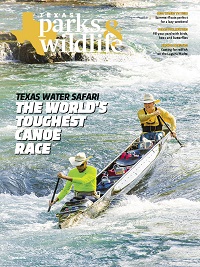
By Carter P. Smith
The sharp raps on our bedroom door and the loud call — “Wake up, wake up, time to get ready. The release is on.” — could mean only one thing. The eggs had hatched!
Our friends Molly and Jim had volunteered the night before to get up in the wee hours of the morning to check the status of a clutch of Kemp’s ridley sea turtle eggs under the watchful and expert care of Jeff George and his able team at Sea Turtle Inc. The eggs had been collected from a nesting turtle on South Padre Island and taken for incubation to the facilities at Sea Turtle Inc. to protect them from predators and to maximize the chance of a successful hatch.
Sure enough, another bunch of hatchlings had just come into the world and would soon be released onto the island sands before heading into the Gulf, where they would spend the remainder of their lives. The hope was that any female turtles that survived into adulthood would imprint onto that very same beach and ultimately make their way back to the island to make their own nests.
We weren’t about to miss it.
As we assembled at the designated release site in the near-dawn hour with a rapidly growing crowd, the excitement was palpable. Kids and adults of all ages huddled and whispered and otherwise anxiously waited as Jeff and his team made final preparations for the release. When the appointed time got nearer, the Sea Turtle Inc. staff carefully showed off some of the hatchlings for quick peeks and photographs. The squeals of delight from the kids were infectious as they saw baby sea turtles for the first time.
And, in no time at all, more than 100 hatchling turtles, each the size of a silver dollar, were released onto the beach. Their ensuing scramble, or waddle, toward the surf was not exactly a picture of perfect synchronization. Some raced right over to the water’s edge and were immediately caught up and swept out to sea by the lapping Gulf waves. Others took a more circumspect, even circuitous, approach, taking their own sweet time to enter the Gulf. Still others attempted to meander farther down the beach, where circling gulls, waved off by vigilant Sea Turtle Inc. staff, threatened to end their journey before it even began.
Ultimately, all of them made it into the Gulf, bringing a raucous cheer from the sea of onlookers. The whole sight was simply awe-inspiring.
So, too, have been the conservation efforts aimed at recovering the Kemp’s ridley, the most endangered of the five imperiled sea turtles found in Texas waters. Brought back from near-extinction from overexploitation in Mexico, where their primary nesting beaches are found, the endangered Kemp’s ridley has survived in spite of the longest of odds and other pressures, including bycatch-related impacts from commercial shrimping in the Gulf. Not surprisingly, their recovery is also a great testament to the persistence of a dedicated few who have labored over decades to make possible what we saw that early July morning.
At the top of that list in Texas is Donna Shaver, a biologist stationed at Padre Island National Seashore who doubles as chief of the National Park Service’s Sea Turtle Science and Recovery Division. As described in John Ostdick’s accompanying piece in this magazine, Donna has made the recovery of the Kemp’s ridley turtles her literal life’s work.
Conservation is not for the faint of heart, particularly for those working in the oftentimes acrimonious realm of protecting endangered species. Thankfully, there has been nothing fainthearted about Donna, who over the course of her distinguished career has worked tirelessly to inspire scientists, fishermen, shrimpers, naturalists, landowners, developers, volunteers and others to get engaged in efforts to ensure that the Kemp’s ridley will be around for generations to come.
And, while we aren’t ready to take the Kemp’s ridley off our proverbial worry list, there are a number of positive signs to show that the efforts of conservationists like Donna are making a material difference. Last year’s record number of turtle nests along the Texas coast is certainly one of them.
A special thanks to Donna for caring about our wild things and wild places. They need her now more than ever.
» Like this story? If you enjoy reading articles like this, subscribe to Texas Parks & Wildlife magazine.
Related stories
6 Days in the Valley: Sea Turtle, Inc.

